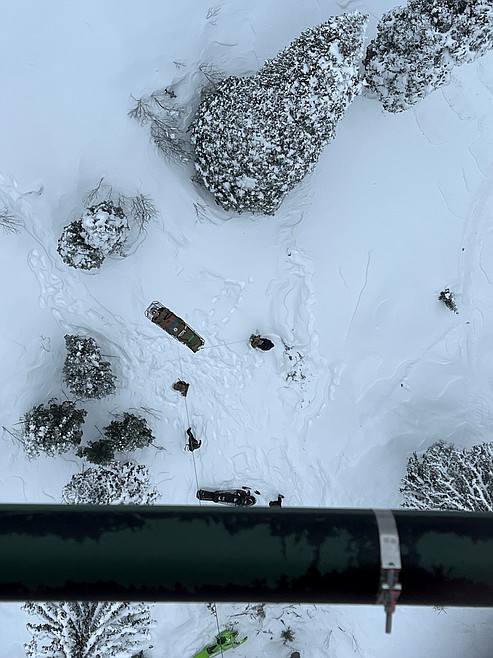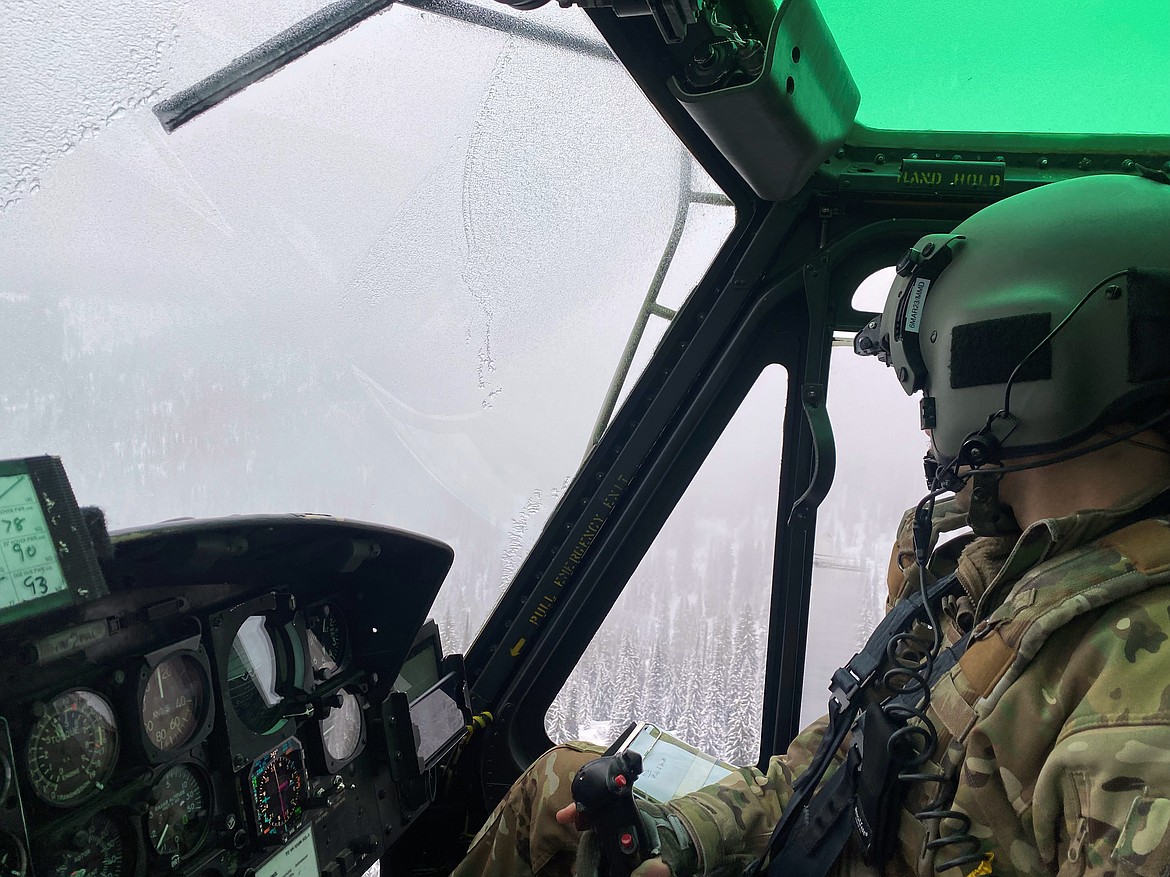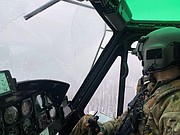Fairchild Airmen rescue injured snowmobiler
SANDPOINT — Earlier this month, Fairchild Air Force Base crews successfully completed the 36th Rescue Squadron's 708th save near Schweitzer Mountain.
The team is credited with saving an injured snowmobiler on Jan. 3 who spent 18 hours outside in 19-degree weather with little access to food or water, Tech. Sgt. Travis Edwards, 92nd Air Refueling Wing Public Affairs, said in a press release issued by the base this past week.
“Our crew was tasked with the mission at around 6:50 a.m.,” said Capt Tyler Maurer, 36th RQS UH-1N “Huey” pilot and aircraft commander for the 708th save. “As soon as I heard about the mission, I honestly prayed for the survivor before anything. We knew the location was nearly 3,000 feet higher than at [Fairchild], and between the potential for icing and relatively low clouds, we were initially worried if we would be able to get to the survivor.”
Nearly two hours later, the team of two pilots, two special mission aviators, and a paramedic departed Fairchild en route to the snowmobiler.
Regular training flights typically only allow a small amount of risk with the weather, so a real-world mission like this with more extreme weather, required much more than what the crew was accustomed to, Edwards said.
Within minutes of arriving at the location, the team was able to successfully locate the individual and begin providing first aid.
“When I got to the ground, there was an amazing (civilian) team already there that had been taking care of the patient,” said Staff Sgt. Gina Harkness, 336th Training Support Squadron paramedic. “They helped me load the patient and we hoisted them safely into the helicopter. I am just happy that we got the patient safely out of there and back to his family.”
Training and collaboration of all 36th RQS airmen are what leads to saves like these and are the reason why in their short 50 years of operation, they’ve been able to save 708 community members, Air Force officials said.
“Often missions come where we don’t have a known location and it weighs heavy on most members of the unit to do our absolute best to find and recover whoever is out there,” said Maurer. “Each member of our crew worked together to squash potential issues before they came up and I feel that’s what ultimately led to a successful rescue that day.”



